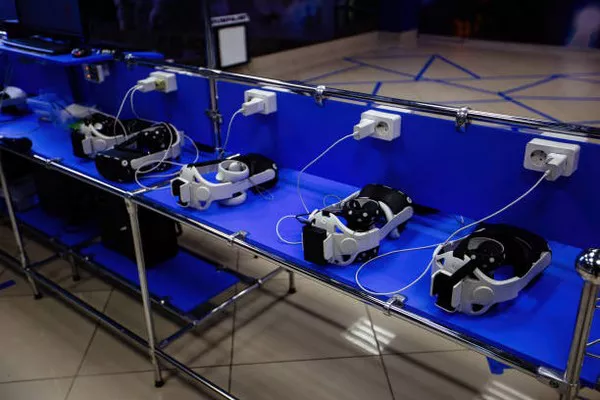In times of severe weather, having a backup generator can provide essential power when the electrical grid fails. Whether you’re preparing for a hurricane, blizzard, or another natural disaster, knowing where to place your generator is crucial for safety, efficiency, and effectiveness. Improper placement can lead to hazards such as carbon monoxide poisoning, electrical shock, or damage to the generator itself. This article will guide you through the considerations and best practices for positioning your generator during a storm, ensuring you make informed decisions to protect both your property and your family.
Understanding Generator Types and Safety Considerations
Before discussing placement, it’s essential to understand the types of generators commonly used during storms:
Portable Generators: These are typically gasoline-powered and are meant to be moved and operated outdoors. They are suitable for powering essential appliances or devices during power outages.
Standby Generators: These are permanently installed units that are connected directly to your home’s electrical system. They operate on propane or natural gas and automatically turn on when the power goes out, providing seamless backup power.
Safety considerations apply to both types of generators but may vary in specific requirements based on their design and intended use. Here are some universal safety guidelines to keep in mind:
Carbon Monoxide (CO) Poisoning: Generators emit carbon monoxide, a colorless and odorless gas that can be deadly. Never operate a generator indoors or in enclosed spaces, including garages, basements, or crawl spaces.
Electrical Hazards: Generators produce high-voltage electricity. Use proper grounding techniques and only connect appliances directly to the generator or via a properly rated extension cord to prevent electrical shocks or fires.
Fire Risks: Keep generators away from flammable materials and ensure they have adequate ventilation to prevent overheating.
Choosing the Right Location
When selecting a location for your generator during a storm, several factors should influence your decision:
1. Distance from Living Areas and Structures
The primary rule for generator placement is to keep it outdoors and away from your home’s living spaces. This includes windows, doors, and vents where CO could potentially enter your home. The minimum safe distance is at least 20 feet away from any building.
Portable Generators: Place these at least 20 feet away from your home, ensuring exhaust fumes are directed away from windows and doors. Use a long extension cord to bring power indoors.
Standby Generators: These are typically installed by professionals and should comply with local building codes regarding distance from structures. They often have built-in ventilation and soundproofing features to minimize noise and emissions.
2. Ventilation and Airflow
Generators require adequate ventilation to operate safely. Poor airflow can cause overheating and increase the risk of carbon monoxide buildup. Consider the following:
Open Spaces: Place generators in open areas where air can circulate freely, away from tall walls or obstructions that could trap exhaust gases.
Direction of Exhaust: Position the generator so that exhaust fumes blow away from buildings, windows, and outdoor activity areas.
3. Protection from the Elements
While generators are designed to withstand weather conditions, protecting them from direct exposure to rain, snow, or debris can extend their lifespan and ensure reliable operation during storms.
Weatherproof Cover: Use a weatherproof cover specifically designed for generators when not in use to protect against moisture and debris.
Elevated Platform: Consider placing portable generators on a stable, elevated platform to protect them from flooding or standing water.
4. Accessibility for Refueling and Maintenance
During prolonged power outages, you may need to refuel your generator or perform basic maintenance tasks. Choose a location that allows easy access without compromising safety or requiring you to navigate hazardous conditions.
Fuel Storage: Store fuel in approved containers in a cool, well-ventilated area away from living spaces. Refuel generators when they are cool to avoid spills and fires.
Maintenance Space: Ensure there is enough space around the generator for you or a technician to safely perform maintenance tasks such as oil changes or filter replacements.
5. Noise Considerations
Generators can be noisy, especially portable models with gasoline engines. Positioning your generator strategically can help minimize noise disturbance for yourself and your neighbors.
Distance from Bedrooms: If possible, place generators away from sleeping areas to minimize noise disruption during operation.
Soundproofing: Consider using sound-dampening materials or installing barriers to reduce noise levels, especially in densely populated areas.
Additional Tips for Specific Situations
1. Boating and RV Use
Generators are often used in recreational vehicles (RVs) and boats for extended periods. When choosing a location:
Ventilation: Ensure generators on boats or in RVs have adequate ventilation to prevent CO buildup in enclosed spaces.
Secure Mounting: Securely mount portable generators to prevent movement during transit or inclement weather.
2. Cold Weather Conditions
In areas prone to freezing temperatures:
Fuel Considerations: Use fuel additives or choose generators that operate on propane or diesel, which perform better in cold weather than gasoline.
Insulation: Protect portable generators from extreme cold with insulated covers or enclosures to prevent damage to internal components.
3. Hot and Humid Climates
In hot and humid climates:
Cooling: Ensure generators have sufficient airflow and ventilation to prevent overheating during extended use in high temperatures.
Maintenance: Regularly clean air filters and check coolant levels to maintain optimal performance in hot weather conditions.
See Also WHAT SIZE GENERATOR DO I NEED FOR A MOBILE HOME?
Conclusion
Properly placing your generator during a storm is critical for safety, efficiency, and reliability. By following these guidelines and considering the specific conditions and requirements of your generator type, you can ensure that your backup power source is ready to provide essential electricity when you need it most. Always refer to the manufacturer’s guidelines and local regulations for additional recommendations tailored to your specific situation. With careful planning and preparation, you can mitigate risks and confidently navigate power outages during severe weather events.

